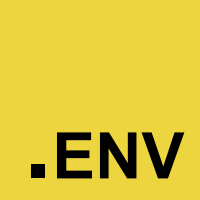From the same people that pioneered dotenv.
Dotenv Vault securely syncs secrets and app configuration across your machines, environments, and team members. Stop sharing .env files over insecure channels like Slack and email.
Learn more at dotenv.org.
Dotenv Vault works with the following integration partners and more.
|
|
|
|
|
|
|
|
|
|
|
|
|
|
|
|
|
|
|
Usage is easy! Run the command:
$ npx dotenv-vault newFollow those instructions and then run:
$ npx dotenv-vault pushAnd if you need to pull changes that another teammate made, run:
$ npx dotenv-vault pullThat's it!
Read our security statement.
💡 ProTip! Append @latest to dotenv-vault to always run the latest version. For example: npx dotenv-vault@latest push. (otherwise, npx caches the first version it encounters on your machine)
Dotenv Vault holds your secrets in a secure and sophisticated way. Learn more
- Step 1 You run
npx dotenv-vault push. The request is started. - Step 2 The .env file is encrypted and sent securely over SSL to Dotenv's in-memory servers.
- Step 3 This encrypted payload is decrypted and briefly held in memory to complete the next steps. Afterward, the memory is flushed. Rest assured the decrypted version is never peristed to Dotenv systems.
- Step 4 The .env file is parsed line by line - in memory. Note: There are some differences between dotenv parsers across various languages and frameworks. So far Dotenv Vault handles these 100%, and we continue to add test cases to cover all edge cases.
- Step 5 Each key/value pair (and any comments) are extracted - in memory.
- Step 6 The secret is divided into its separate key and value. This is by design. They will be stored in separate databases for added security. This way if an attacker somehow gained access to one database they would not be able to make sense of the data - having only half of the puzzle.
- Step 7 The
KEYis encrypted. TheVALUEis encrypted. They are encrypted with different master encryption keys. This way if an attacker somehow gained access to theVALUEdecryption key they would find the data useless. They would not know if the secret belonged to Twilio or to AWS. Encryption uses the AES-GCM algorithm. It is:- well-studied
- NIST recommended
- an IETF standard
- fast thanks to a dedicated instruction set
- Additionally, all master encryption keys are rotated on an unpublished schedule, further adding to the level of security.
- Step 8 The encrypted
VALUEis sent to Dotenv Vault for safe storage. A token is returned as an identifier. The token is used in the next step for mapping theKEYto theVALUEfor later secure-read operations. Multiple security measures go into the Vault. They include but are not limited to:- Separate datastore from the application database
- Not accessible via the internet and all external connections are prevented
- Encrypted clients are required and these clients have to go through the application - which has its own additional layers of encryption
- There are stricter TLS requirements for connecting to the Vault. TLS 1.0 cannot be used to connect.
- The secrets stored in the Vault are not just encrypted at the datastore level. They are also encrypted at each datastore entry as you saw in the prior step(s).
- Step 9 Lastly, the encrypted
KEYand token (representing the encryptedVALUE) are placed in an envelope and stored together in the application database. - Step 10 success message is returned to the user.
Create your project at Dotenv Vault.
Example:
$ dotenv-vault newPush your .env file securely to Dotenv Vault
Example:
$ dotenv-vault push
# pushes local .env to remote developmentSet input filename. Defaults to .env.
Example:
$ dotenv-vault push .env.development
# pushes .env.development to remote development environmentExample:
$ dotenv-vault push .env.production production
# pushes local .env.production to remote production environmentDirectly pass your DOTENV_ME value to the command line, instead of reading from a .env.me file.
Examples:
$ dotenv-vault push .env.development --dotenvMe=me_1234
# pushes local .env.development to remote developmentPulls your development|staging|ci|production environment(s) to your machine.
Example:
$ dotenv-vault pull
# pulls remote development envs to .envPull .env.ci, .env.staging, and .env.production
Example:
$ dotenv-vault pull staging
# pulls remote staging envs to .env.stagingSet output filename. Defaults to .env for development and .env.{environment} for other environments. Exception: When using DOTENV_IT tokens it defaults to .env for all environments.
Example:
$ dotenv-vault pull production .env
# pulls remote production envs to .envDirectly pass your DOTENV_ME value to the command line, instead of reading from a .env.me file.
Examples:
$ dotenv-vault pull staging --dotenvMe=me_1234
# pulls remote staging envs to .env.staging
$ dotenv-vault pull production .env --dotenvMe=me_1234
# pulls remote production envs to .envDisplay help for dotenv-vault commands.
USAGE
$ dotenv-vault help [COMMAND]
ARGUMENTS
COMMAND command to show help for
OPTIONS
--all see all commands in CLI
Example:
$ dotenv-vault help push
NODE_TLS_REJECT_UNAUTHORIZED=0 DOTENV_API_URL=https://vault.dotenv.development ./bin/dev
npm test
Only for those with permission.
npm version patch
npm publish
See CONTRIBUTING.md
See CHANGELOG.md




